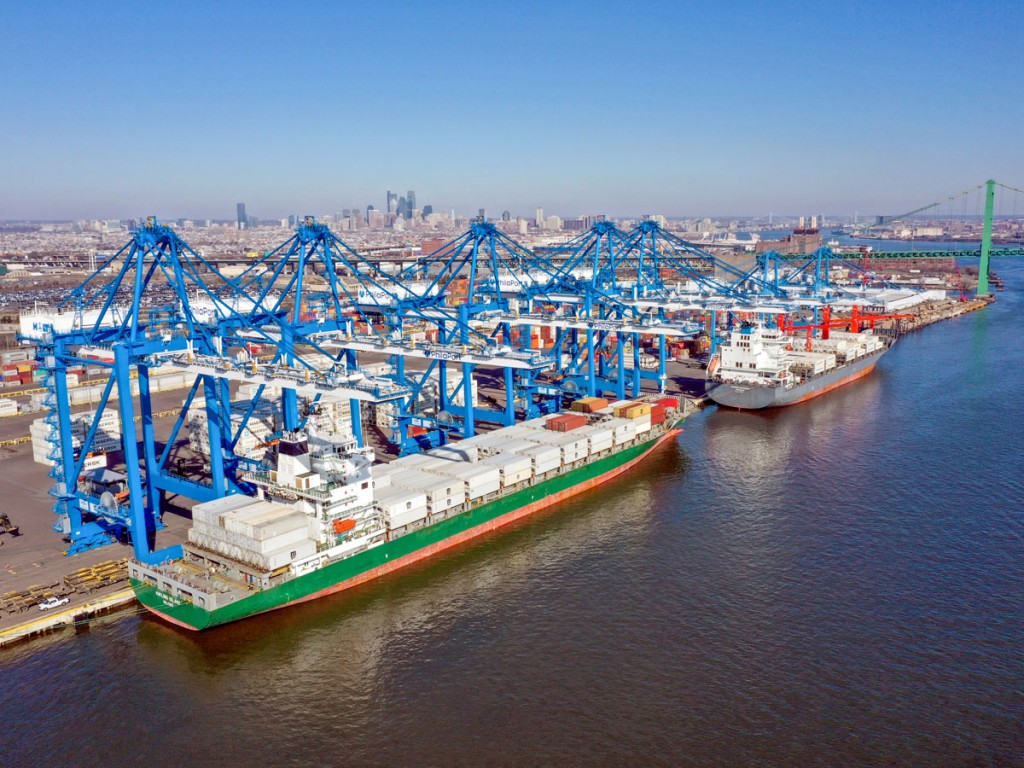With televised cooking shows steaming and a genuine new interest in health and expanded cuisine, American consumers have finally moved beyond an apple a day.
While the United States has vast agricultural potential, winter still happens throughout virtually all producing areas.
But in recent decades, deciduous fruit producers with opposite seasons, such as Chile, South Africa and New Zealand, with their counterparts in countries like Peru, Colombia, and Central America, have skyrocketed in exporting critical offseason items like melons, asparagus, baby vegetables, as well as citrus, mangos and papayas.
The global produce industry has moved with temperature-controlled logistics providers to supply motivated consumers year-round with a vast variety of fresh fruits and vegetables.
Philadelphia’s Dock Street received produce in the colonial days. While most arriving vessels were laden with apples, squash, and tomatoes harvested in southern New Jersey, Philadelphia’s tradition has been in place throughout our nation’s history.
It was in the mid-1970s that Philadelphia gained modern-era traction, receiving grapes and tree fruit made possible by Chile’s emerging free market economy.
Philadelphia-area port leaders, who led this development 35 years ago – and now, their children - have grown with the trend. This institutional experience makes Philadelphia, and its Delaware River Valley counterparts in New Jersey and Delaware, unquestionable leaders in modern day U.S. produce import trade.
After years of political discussion, the three states finally cooperated and chipped in to deepen the Delaware Channel to 45-feet. In grossly simplified terms, dredges pulled mud all the way from Cape May to downtown Philadelphia. And now, the world’s largest containerships have new access to the key seaport. Philadelphia, the Gloucester Marine Fruit Terminal in Gloucester City, New Jersey, and the Port of Wilmington have independently invested in new cranes to serve the larger vessels.
If Pennsylvania is the Keystone State, the Delaware Valley is then the wheel hub for produce trade on the U.S. East Coast. This geographic position presents a basic advantage for global food shippers targeting the richest, most populated segment of the world’s wealthiest country. The Delaware Valley’s many interstate highways put trucks within a two-day drive of half the Canadian and U.S. population.
With its long experience handling perishable fruit, the Delaware River port industry has built specialty facilities for refrigerated break bulk, and now, especially, reefer containerized operations.
This port community has for years developed closely coordinated working relationships with all relevant government agencies to expedite produce, meat and other perishable cargo movement.
PhilaPort, which manages Philadelphia’s seaport, indicates the Delaware Valley’s fruit imports in 2020 had a total value of $3.6 billion. The region received $5.2 billion of food and associated products in 2020.
Refrigerated cargoes along the river in 2020 were up 21% compared to 2019, according to PhilaPort.

A few years ago, the Commonwealth of Pennsylvania committed $300 million to developing Philadelphia’s port. That development is still underway, with a most-recent warehouse groundbreaking on March 4 near the Packer Avenue Marine Terminal.
To assure widespread efficiency, PhilaPort invites federal inspection agency cooperation to maximize their productivity within new facility layout.
PhilaPort statistics indicate that in 2020, its container business rose seven percent, from 598,000 in 2019 to 641,000 TEUs. There has been consistent growth in TEUs since 2012, when the total was a mere 88,461TEUs.
PhilaPort also reports that its sea container volume for January-November 2020 rose six percent, while the average change for U.S. East Coast ports dropped three percent. Philadelphia was the only eastern seaport to see increased container business in the Year of Covid.
PhilaPort boasts the existence of 366,000 square feet of on-dock refrigerated warehouse capacity. The agency also indicates there are over 400 distribution centers within two hours of its terminals.
Cold Storage
Large national warehousing companies are quickly buying into this business.
On the private warehousing side, there is Frank Manfredi, Sr., who is a partner with his brother, John Manfredi, in Manfredi Companies. Frank’s key responsibility is heading Manfredi Cold Storage.
Forty years ago, the brothers launched a cold warehousing business from their family’s roots in the mushroom industry centered in Kennett Square, PA. Located just a few miles north of the Port of Wilmington, one expansion after another has brought Manfredi to 430,000 square feet of modern, computerized cold warehousing. This May, Manfredi Cold Storage is completing a 100,000 square foot facility near Gloucester City. Frank Manfredi said March 2nd that he will break ground for an adjacent expansion as the first New Jersey warehouse-office complex is completed.
Manfredi said a key strength of receiving into his region is the abundance of backhaul opportunities. From his Kennett Square office, he noted: “I’m looking at a parking lot with 50 or 60 trucks looking to get out today.” The northeastern United States’ megalopolis draws delivery trucks from across the country. Those truckers are hungry to avoid deadheading home.
As to his expansion in New Jersey, Manfredi noted: “We wouldn’t do what we’re doing if we didn’t see great potential.”
Part of Manfredi Companies is Manfredi Repacking. Manfredi noted this business will thrive as consumer demand for individual produce packaging grows.
Manfredi and the entire Delaware Valley produce industry make a good living with fruit primarily from, listed alphabetically, Argentina, Chile, Colombia, Costa Rica, Guatemala, New Zealand, Peru, South Africa and Uruguay. Growers in many other countries, such as Brazil, Ecuador, Morocco and Spain also ship into the Delaware Valley.
Representing all the major banana companies, bananas account for 44 percent of the Delaware Valley’s refrigerated cargo volume. Pineapples, which often ride aboard banana ships, rank second at 10%. Citrus accounts for seven percent. Grapes and melons both account for four percent of refrigerated container volume.
Meats account for 11% of the refrigerated container volume steaming up the Delaware River. “Other” commodities comprise the remaining 20%.
Manfredi notes that other United States ports are trying to cut into the Delaware River refrigerated cargo business. That may happen now and again. But he said the benefits offered by the region are attractive to exporters for many reasons.





